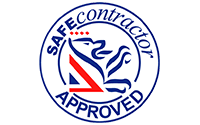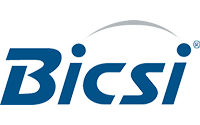
If you’re planning on updating your IT infrastructure, then you’re going to love this free data center migration checklist. Both high and low profile changes are inevitable at some stage – it’s how you manage those changes that impact the business.
99% of data centers consist of highly complicated pieces of hardware that includes physical storage drives, network security, software and even data cabling.
When a data center manager decides that things need to be relocated through data center migration, an element of panic tends to wonder through the air.
Have no fear; we can help.
Do I Need a Full Data Center Migration Checklist?
No, not necessarily.
However, being organised and having a physical structured plan is only going to make moving your data easier and more secure. So it makes sense really.
Of course, you can go ahead and start relocating your data center without planning, but let us tell you know – it will end in disappointment and more downtime, something that businesses in 2017 cannot afford to have.
Starting your data relocation without a plan or check-sheet to refer to is like moving home without an estate agent; it’s possible but far more complicated and stressful.
1. So Why Are You Migrating?
It’s important to understand exactly why your system is going to be relocated as this helps with productivity and can help other departments of your business plan and cope with any downtime that may occur.
So why are you starting a new migration?
- Is your current data center not meeting industry standards
- Do you need an boost in processing power
- Is the business trying to save money
- Is there going to be a likely business transition
Whatever the reason, you need to make sure that it is done correctly.
A well-maintained data center that has been correctly relocated can provide assurances for back-ups, archiving, general data management and security to the site.

2. Have a Clear Plan of Action and Implement It
Without a detailed plan, your migration runs a higher risk of failure.
You need to ensure that you create a full data center migration plan that clearly states each individual step and how it will be completed. At this stage, it is also worth identifying any resources that you will require in order for the migration to run smoothly.
If you manage a large database, make sure that you identify the size of the task that lies ahead. During this process, remember to set a full budget for the migration. This should be done for any data center migration checklist as it can help you save money and be more efficient during the relocation.
As part of the plan, create a structure for the new systems. They should be able to meet the requirements of the old units and support growth in the future.
3. Make Everyone in the Business Aware
There is nothing worse than running a migration project and leaving everyone out of the loop. As a data center manager, it is your responsibility to engage with the various departments within the business and prepare them for any potential downtime.
A great way to prepare these different departments is to spend some good quality time with them, understanding how they operate and what really makes them tick.
In some cases a data center refurbishment will include a migration. This usually happens when the system is being upgraded.
During the planning stages, speak with each of the department heads and make sure that their input is recognised and you take action.
4. Find the Best Time to Start Migrating
Disruptions or “downtime” as they are sometimes called can be extremely effective for businesses, but in the wrong way.
Department heads and business owners expect their systems to be available 24/7, but anyone in the IT industry knows that this isn’t always the case.
Unfortunately, disruptions do occur and it is your job as the center manager to identify the best slots to begin.
There may well be areas of the network that need to be backed up. This can then create a slot were a migration task can be completed. By taking advantage of a backup window, you can significantly reduce the downtime.









